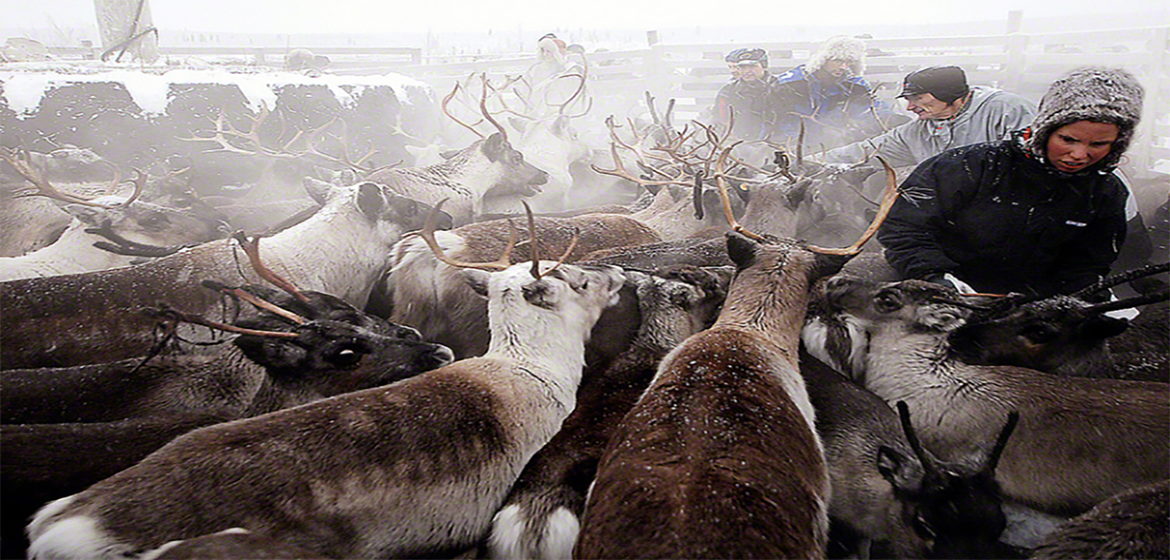The Norwegian state has ordered to the ‘carrying capacity’ deemed acceptable by the Ministry of Agriculture and Food, arguing that high stocking rates detrimentally affect the fragile tundra ecosystem. Herder Jovvset Ánte Sara has been battling the state in the courts, resisting the requirement to reduce his herd to 75. Late last year, he , but vowed to fight on, arguing that this was an assault on indigenous rights.
As points out, the case offers a good example of why an ‘arrogant’ control-oriented top-down planning does not make sense in rangeland settings that are highly variable, and where livelihoods are dependent on tracking variations in fodder to maximize returns. A fixed carrying capacity is irrelevant in where population sizes are controlled by density independent factors (such as rainfall) not population densities. The trick in such environments is to track opportunistically, destocking when things are bad and rapidly restocking when things improve. , not fixed, controlled management regimes.
The Norwegian ministry is making the same mistake that many throughout the world make too. Importing models from stable, equilibrium environments where linear Clementsian succession models define understandings of what optimal offtake is combined with what stocking rate and rangeland composition. This is the ideal type ranch version of , imported from the mid-western US or Australia (although as many have pointed out, the model doesn’t always work well in its home environment either).
In Norway migrate between winter and summer grazing areas, as so many transhumant livestock keepers do, from the Pyrenees to Tibet. This is crucial to the sustainability of the system, is based on deep , and means that herders can gain livelihoods from harsh environments. Mobility is changing of course, as pastoralists make use of new ways to herd or transport, and purchased fodder may offset the requirements of moving to open range. But the principles are the same, and fixed area-based carrying capacities are meaningless. In , they represent a basic .
Carrying capacity numbers promoted by ministries around the world often also confuse . First is , the limit of numbers that a given area can take, without irreversible damage. Of course this is complicated in where multiple areas are used, and in most grazing systems where maximum numbers (and so density dependent selection) is based on often small patches (key resources). This is where the last available fodder is to be found in the most constrained period. Giving a fixed number for ecological carrying capacity is difficult, but may be approximated for any given system from population dynamics estimates with long-run data.
The second concept is . This may be very different. This depends on what users want from the system. If this is a very well-fattened animal for direct slaughter from the range, the ideal stocking rate may be quite low. If the aim is to maximize numbers for multiple uses, from bridewealth to draft power to milk and meat, stocking rates should be higher – although not higher than the long-run ecological carrying capacity, as the flow of goods over time may be jeopardized.
It is not clear which number is being used in Norway, and on what basis it was decided. Very often such numbers in official rangeland management manuals are just guesses, and may run counter to the livelihood strategies of herders. In Zimbabwe, for example, major protests erupted when the colonial government tried to impose , based on fixed stocking rates derived from commercial ranches. The resentment was massive, court cases were held, and around the need to resist such impositions.
Sami herders, marginal in Norwegian society, yet respected as indigenous peoples managing a valuable resource, as other pastoralists, need to be part of the debate about what science counts. Edicts on carrying capacity from on high and adjudicated in the courts are of no use, and just cause resentment and resistance. Instead, sustainability must emerge from a deeper knowledge of such complex and uncertain ecosystems; and there are no better people to be involved in this debate than herders themselves.
Source:
Related to SDG 8: Decent work and economic growth and SDG 10: Reduced inequalities



